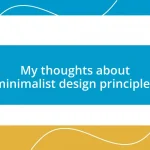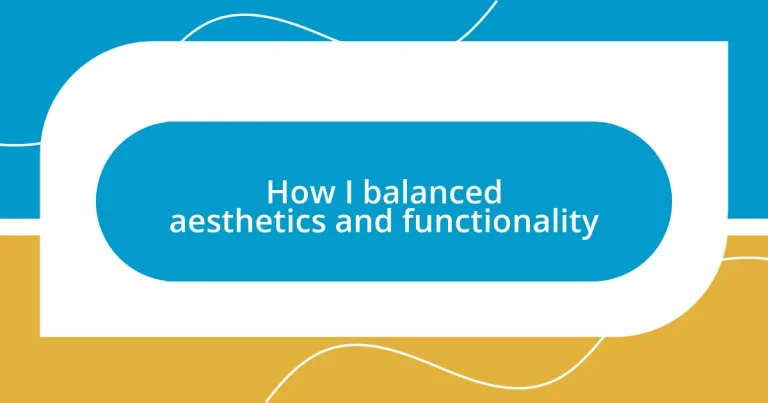Key takeaways:
- Aesthetics and functionality can coexist with thoughtful design, enhancing spaces without compromising usability.
- Key design principles include balance, simplicity, and user-centered design, ensuring designs are both visually appealing and practical.
- Practical steps for integration involve defining a vision, selecting multi-functional furniture, and limiting decorative clutter.
- Tools like user feedback, usability testing, and checklists can help assess and improve the balance between aesthetics and functionality.
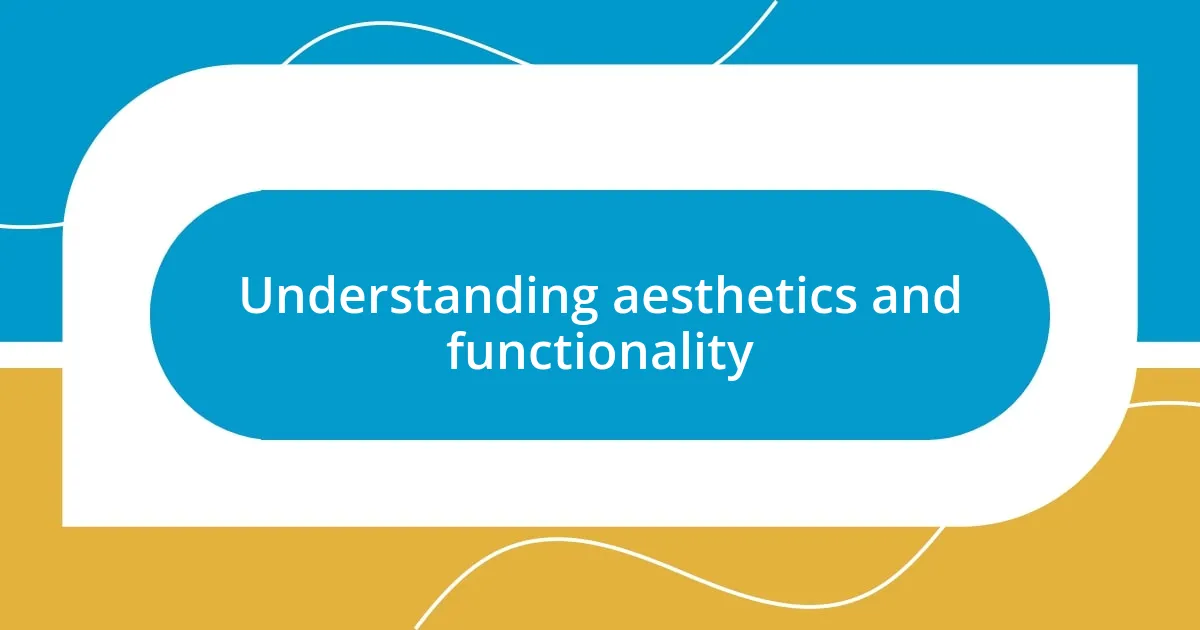
Understanding aesthetics and functionality
Aesthetics and functionality often feel like two sides of a coin, don’t they? I remember the first time I redesigned a room in my home. I wanted it to look stunning—something that would impress my friends—yet I found myself frustrated by how impractical some elements were. That experience taught me that a space can be beautiful and still serve a purpose; it just requires thoughtful balance.
When I think about aesthetics, I envision colors, shapes, and materials that evoke emotion. I’ll never forget the rush I felt when I chose a vibrant, deep blue for my living room walls; it turned a mundane space into something inviting. However, as I added decorative pieces, I had to pause and ask myself: would this really work with my family’s everyday activity? This moment of reflection underscored for me the importance of ensuring that beauty does not come at the expense of ease and usability.
In my journey toward a balanced design approach, I often reflect on how crucial it is to consider the end-user’s experience. Can a piece of furniture be both eye-catching and comfortable? I’ve had encounters with stunning coffee tables that looked incredible but were utterly impractical for daily use. By prioritizing functionality alongside aesthetic pleasure, I discovered that the best designs are often those that make life simpler while still igniting joy.
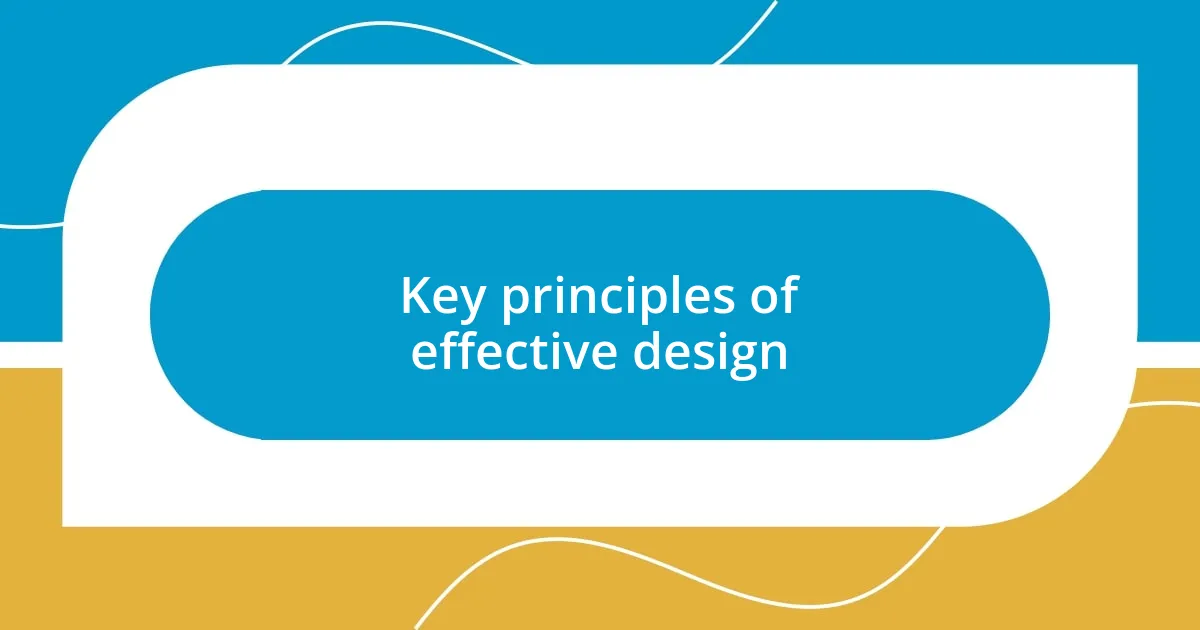
Key principles of effective design
When I delve into effective design, I can’t help but reflect on balance. I’ve faced challenges where a piece overwhelmed its space, drawing attention but serving no practical purpose. I learned that the best designs invite you in, allowing you to flow through a space effortlessly while still leaving a lasting impression.
One key principle is simplicity. I recall attempting to blend too many styles in one room; it quickly devolved into chaos. The moment I stripped everything back to a few well-chosen items, the room transformed. Functionality and aesthetics thrive when they share elements rather than compete. It’s about creating a harmonious environment that breathes ease, often more powerful than a fully adorned one.
Another essential factor is user-centered design. I often think back to a friend who designed her kitchen for style rather than usability. After a few months of cooking, the gorgeous but shallow sink became a source of frustration. The joy of cooking was overshadowed. In my experience, involving the end-user in the design process ensures that spaces serve their purpose while maintaining visual appeal.
| Principle | Description |
|---|---|
| Balance | Ensuring aesthetics and functionality complement each other, creating a harmonious environment. |
| Simplicity | Focusing on minimalism to avoid overwhelming the design, enhancing usability without sacrificing beauty. |
| User-Centered Design | Prioritizing the experience of the end-user, ensuring convenience and practicality are embedded in aesthetic choices. |
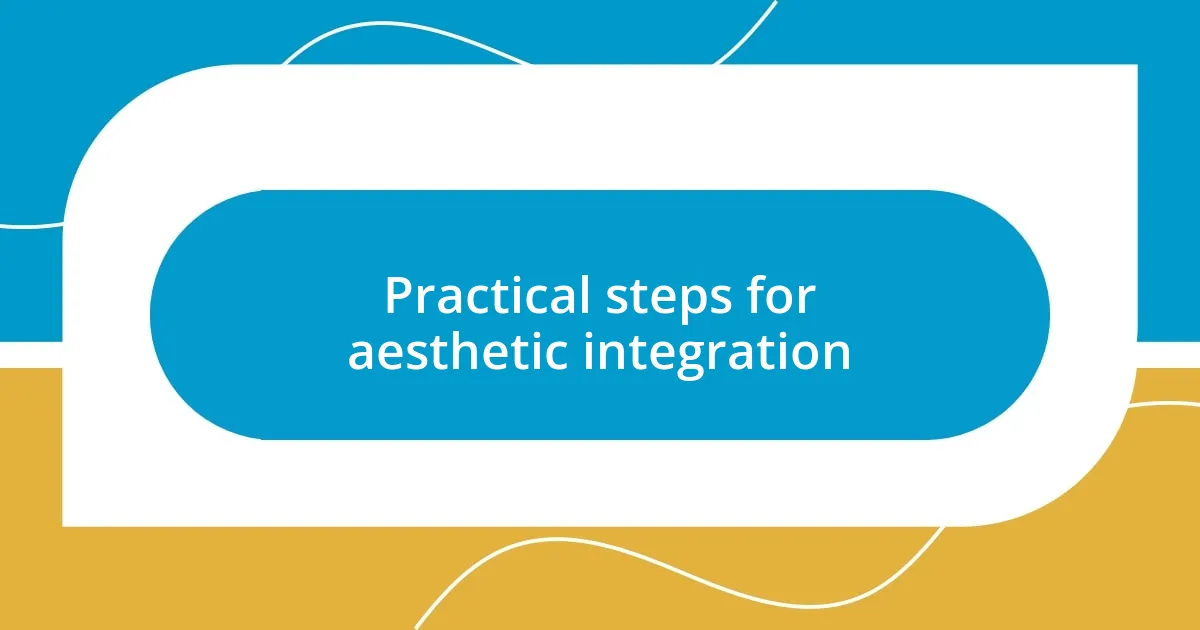
Practical steps for aesthetic integration
Practical steps for aesthetic integration begin with a clear understanding of your priorities. I vividly remember when I was selecting decor for my office. Initially, I was captivated by an array of beautiful items that drew my eye. However, as I placed them on my shelves, I realized I was losing functionality; papers and supplies were shoved aside, buried under my newfound treasures. So, I made a simple rule: each piece had to earn its spot by enhancing both the look and utility of my workspace.
Here are some practical steps I found helpful during my journey:
- Define your vision before shopping—this gives you a clear framework to adhere to.
- Choose multi-functional furniture like ottomans that provide seating and hidden storage.
- Limit decorative items to a few standout pieces that complement functional areas, avoiding clutter.
- Incorporate natural elements such as plants, which can beautify any space while improving air quality.
- Test the layout and make adjustments to ensure every piece serves a purpose while enhancing the overall aesthetic.
By implementing these steps, I learned that design can effortlessly flow between the aesthetic and the practical, creating spaces that truly resonate with everyday life.
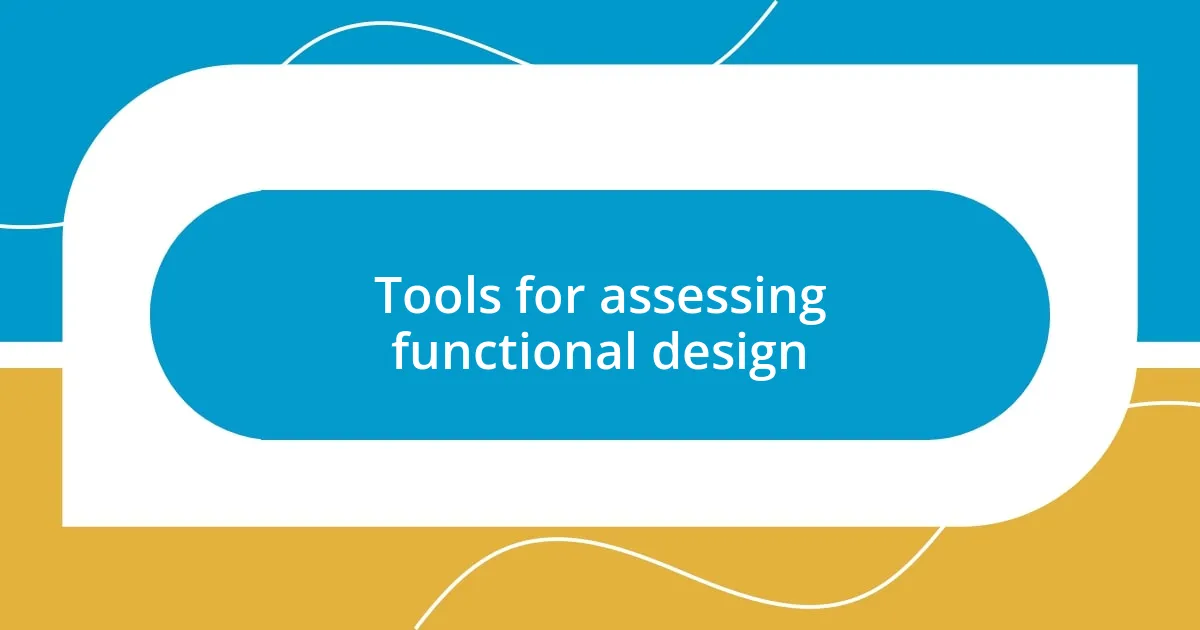
Tools for assessing functional design
When assessing functional design, I’ve found that using tools like user surveys and feedback forms is invaluable. I remember conducting a survey after a revamp in my living room. The insights from friends and family helped tweak aspects I hadn’t considered, like the placement of furniture for better flow. It’s amazing how a simple question can open the door to deeper understanding of usability.
Another effective method is to use usability testing, especially in spaces meant for work or play. I once had a chance to observe a team using a newly designed conference room. Watching them navigate the space highlighted the importance of easy access to tech and comfortable seating. Sometimes, the most apparent issues don’t reveal themselves until you see people engage with the space.
Lastly, developing a checklist or a matrix can be incredibly helpful to evaluate the balance of aesthetics and functionality. I crafted my own matrix while renovating my kitchen, listing out essential features and their visual impact. This process not only clarify decisions but also sparked a creative dialogue within myself—what truly serves the purpose, and how can I make it beautiful? Such tools act as guiding principles, ensuring that every aspect of design contributes positively to functionality.
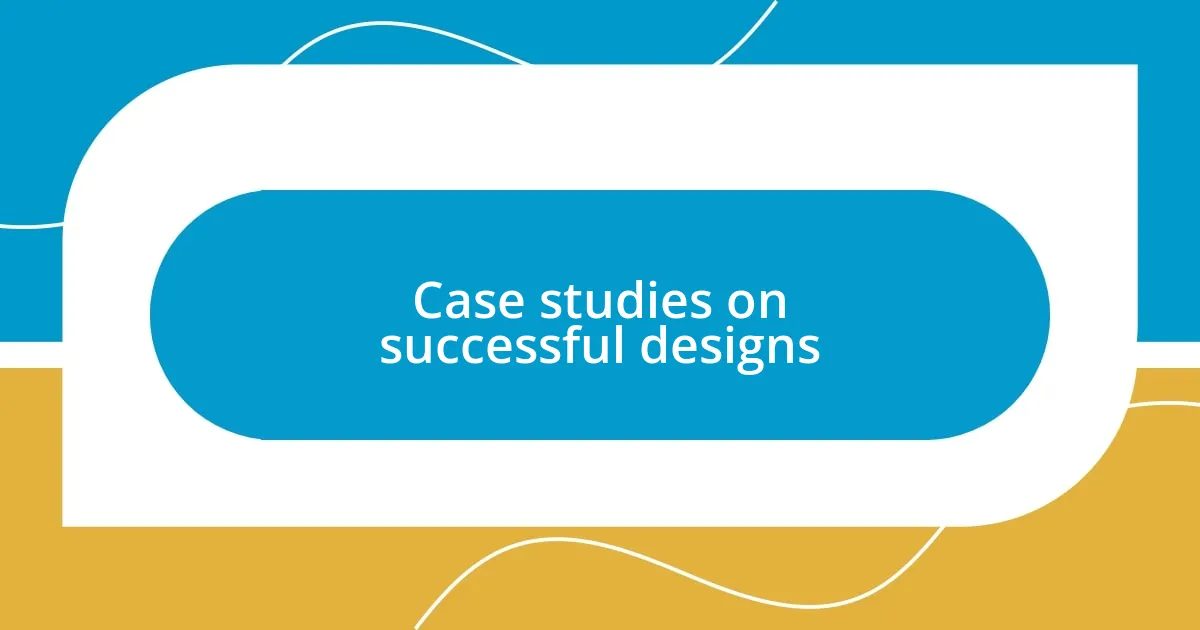
Case studies on successful designs
One of the standout examples of successful design that has always impressed me is Apple’s approach to product aesthetics and functionality. I remember unboxing my first iPhone and feeling a rush of excitement—not just because of its sleek look, but also due to how intuitively it worked. This balance is deliberate; Apple meticulously designs each product to be visually stunning while ensuring that every feature serves a practical purpose. It’s a constant reminder of how the right design can create a seamless user experience, making technology feel like a natural extension of ourselves.
Another case that resonates with me is the redesign of my friend’s small apartment. She faced the daunting challenge of maximizing space without compromising style. By incorporating a Murphy bed and a foldable dining table, she transformed her cozy nook into a multifunctional haven. Watching her navigate the flexible layout truly highlighted how aesthetic choices can enhance lifestyle—imagine effortlessly switching from a workspace to a relaxing retreat with just a few adjustments. Doesn’t it make you think about the potential hidden in our own spaces?
Then there’s the famous example of the Barcelona chair designed by Ludwig Mies van der Rohe and Lilly Reich. This chair exemplifies how a piece can be strikingly beautiful while still providing the utmost comfort. I actually sat in one at a design exhibit and was struck by how its graceful curves invited relaxation while maintaining an air of elegance. It’s this very balance that encourages us to rethink our own design choices—what if we sought pieces that not only catch the eye but also provide a haven for our bodies? It’s clear that when we prioritize both aesthetics and functionality, we invite deeper enjoyment into our daily lives.



